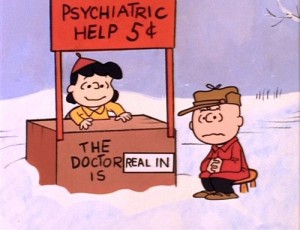
The Royal College of Psychiatrists (RCPsych) has recently published guidance on when children and young people should see a consultant child and adolescent psychiatrist (Hindley P, 2014). The guidance has been written by Dr Peter Hindley (Chair of the RCPsych Faculty for Child and Adolescent Psychiatry) with contributions from four child and adolescent psychiatrists working across the UK.
The guidance is aimed at commissioners, providers of mental health services, child and adolescent psychiatrists, other mental health professionals, and patients.
The publication of this guidance is perhaps particularly pertinent in light of the government’s recent establishment of the new Children and Young People’s Mental Health and Wellbeing Taskforce (2015), one of the aims of which is to improve how child and adolescent mental health services (CAMHS) in the UK are “organised, commissioned and provided”.
This blog post is a summary of the recent RCPsych guidance, followed by my own comments.
What is a child and adolescent psychiatrist?
The definition provided in the guidance is:
A medically trained specialist with skills in the assessment, management and treatment of mental health problems, disorders and illnesses in children and young people under the age of 18.
Consultant child and adolescent psychiatrists have undertaken a medical degree (usually 5 years), 2 years of foundation training in a hospital setting, 3 years of core training, and 3 years of training specialising in child and adolescent psychiatry (RCPsych, 2015).
Training is received in patient assessment, diagnosis and formulation (summary of the diagnosis, problem list and causation, with recognition of uncertainty where it exists), which are key to establishing a care management plan for the patient. Child and adolescent psychiatrists are also trained in establishing and maintaining a therapeutic alliance with patients, and in effective clinical leadership.
A core responsibility of child and adolescent psychiatrists further lies in supporting research, which is the foundation of evidence-based and improved patient care.

Contrary to portrayals in popular media, consultant psychiatrists usually spend 13 years in training.
What do child and adolescent psychiatrists do?
Child and adolescent psychiatrists work in both outpatient and inpatient settings in CAMHS. These include:
- Community and outpatient Tier 2 CAMHS (targeted) and Tier 3 CAMHS (specialist)
- Inpatient child and adolescent mental health units
- Tier 3+ CAMHS in England (outreach, crisis intervention and supported discharge)
- Tier 4 CAMHS in Scotland (community)
However, child and adolescent psychiatrists will also liaise with a wide range of services including: general practitioner (GP) services; hospital paediatrics; education; social care; the voluntary sector.
Key responsibilities of child and adolescent psychiatrists in community and outpatient CAMHS include:
- Assessment, diagnosis and formulation for complex, high-risk cases
- Managing patients with comorbid medical conditions
- Acting as clinical leaders in teams to ensure that the highest standard of care is achieved
- Providing consultation and supervision for other mental health professionals within the service
Thus, not all patients in community and outpatient CAMHS will need to be seen by child and adolescent psychiatrists. In limited circumstances, for children and young people presenting with particularly complex and high-risk problems, child and adolescent psychiatrists will be involved in delivering therapy to these cases.
Child and adolescent psychiatrists can draw on a range of therapeutic approaches to help patients, and can also offer an expert view on the use of medication, where necessary, in the treatment regimes of children and young people.
Given the often challenging nature of inpatient cases in particular, child and adolescent psychiatrists working in inpatient settings should personally review each patient at least once a week, with important decisions about the patient’s care being made, where possible, by the child and adolescent psychiatrist who knows them best.
Inpatient child and adolescent psychiatrists also have the primary responsibility for the physical health of the patients in their care.
Similarly, reflecting the fact that patients seen by Tier 3+ or Tier 4 community CAMHS teams are generally very unwell and would be in inpatient care were it not for these services, child and adolescent psychiatrists working in these settings should personally review each patient at least once a week, as well as at the patient’s entry to and exit from the service.
In addition, patients who have experienced a significant episode of self-harm (involving their presentation to an accident and emergency department), and who have been assessed by other members of the service team, should be discussed with a child and adolescent psychiatrist.

Not all child and adolescent psychiatrists have a woodland view from their place of work.
What are the standards to which child and adolescent psychiatrists work?
- Providing high quality, safe, personalised care to patients. This requires having sufficient time to engage with patients and their families, and to support other mental health professionals in the provision of such care.
- Having knowledge of and using national guidance regarding the treatment of psychiatric disorders. However, for patients with complex disorders and patients who have not responded to first- and second-line interventions, (essentially those for whom national guidance may not exist or apply to) child and adolescent psychiatrists should use their expertise and judgment to develop treatment plans.
- Documenting why clinical decisions are made for those patients whose care they are directly involved in. This is especially important for those complex cases for whom national guidance in relation to treatment may not exist.
The RCPsych guidance provides a detailed account of when a child or young person presenting with mental health problems should be seen by a child and adolescent psychiatrist, and a clear explanation of the key roles and responsibilities of these particular mental health professionals.
The guidance highlights at several points that child and adolescent psychiatrists need “sufficient time” in order to carry out important aspects of their roles including:
- Undertaking tasks relating to mental health legislation
- Personally reviewing each patient at least once a week in inpatient and Tier 3+ or Tier 4 settings
- Engaging with patients and their families in both inpatient and outpatient settings to ensure the provision of high quality, safe, personalised care
- Supporting other members of their multidisciplinary team in the provision of such care
In currently over-stretched, under-funded NHS CAMHS (YoungMinds, 2014), I wonder how realistic this concept of “sufficient time” is. This highlights the importance of the government’s recent establishment of the Children and Young People’s Mental Health and Wellbeing Taskforce.

Sufficient time is required for child and adolescent psychiatrists to be able to provide high quality, safe, personalised care to their patients.
Links
Primary guidance
Hindley P. (2014). When to see a Child and Adolescent Psychiatrist. (PDF). Royal College of Psychiatrists, UK.
Other references
Children and Young People’s Mental Health and Wellbeing Taskforce (2015). Future in Mind: Promoting, Protecting and Improving our Children and Young People’s Mental Health and Wellbeing (PDF). Department of Health and NHS England.
RCPsych (2015). A Career in Psychiatry. Royal College of Psychiatrists website, last accessed 24 Mar 2015.
YoungMinds (2014). Stop cutting CAMHS services. YoungMinds website, last accessed 24 Mar 2015.
RCPsych (2014). A Competency Based Curriculum for Specialist Training in Psychiatry: Specialists in Child and Adolescent Psychiatry (PDF). Royal College of Psychiatrists, UK.
AoMRC (2012). The Benefits of Consultant-Delivered Care (PDF). Academy of Medical Royal Colleges, UK.

RT @Mental_Elf: When to see a child & adolescent psychiatrist: we summarise the recent @RCPsych guidance http://t.co/mTcwPi5cd8
When to see a child and adolescent psychiatrist: recent RCPsych guidance: Emily Stapley summarises the recent … http://t.co/8lyG3mxlvl
Kirsten Corden liked this on Facebook.
Angie Lock liked this on Facebook.
When to see a child and adolescent psychiatrist: recent RCPsych guidance http://t.co/BTw3GiRtYW #MentalHealth http://t.co/wX8O4bUYbz
My @Mental_Elf blog post! When to see a child & adolescent psychiatrist: we summarise the recent @RCPsych guidance http://t.co/8PETQCYTwR
When to see a child and adolescent psychiatrist http://t.co/N03ZwfrokV
Hampshire Healthcare Library Service liked this on Facebook.
When to see a child and adolescent psychiatrist #CAMHS http://t.co/TRhPmsc5mM
Great blog re @rcpsych “When to see a child&adolescent psychiatrist” study- C&A psychs vital part of CAMHS workforce http://t.co/lCerv6YNXv
Alyson Price liked this on Facebook.
Mental Elf: When to see a child and adolescent psychiatrist: recent RCPsych guidance http://t.co/jEeuj7tmi5
Don’t miss: When to see a child & adolescent psychiatrist: we summarise the recent @rcpsych guidance http://t.co/mTcwPimNBI #EBP
MT @Mental_Elf: Don’t miss: When to see a child & adolescent psychiatrist http://t.co/fi5h9BC82Y #EBP > @WeSchoolNurses @WeCYPnurses
TY @Mental_Elf @rcpsych. V. useful information for commissioners, YP, carers and stakeholders @camhs_wlmht @WLMHT #multidisciplinaryteamwork
& u only have to wait about a year for the appointment
When to see a child and adolescent psychiatrist: recent RCPsych guidance http://t.co/DGlRdFDd7L
A really interesting new site covering mental health news https://t.co/eGSSsdAU0Z
Ilario Mammone liked this on Facebook.
Have you ever wondered if your child and adolescent needs to see a psychiatrist? These guidelines may help you decide http://t.co/32nH96LVgB
@Mental_Elf blog: When to see a child & adolescent psychiatrist: summary of recent @RCPsych guidance http://t.co/ckQdoYSYco via @em_stape